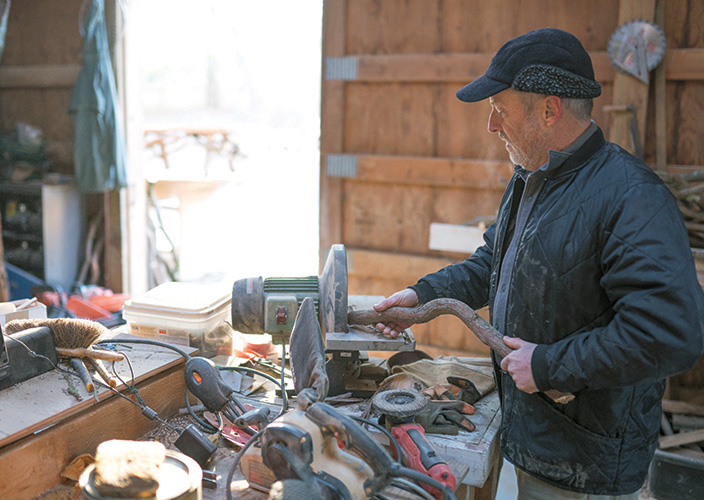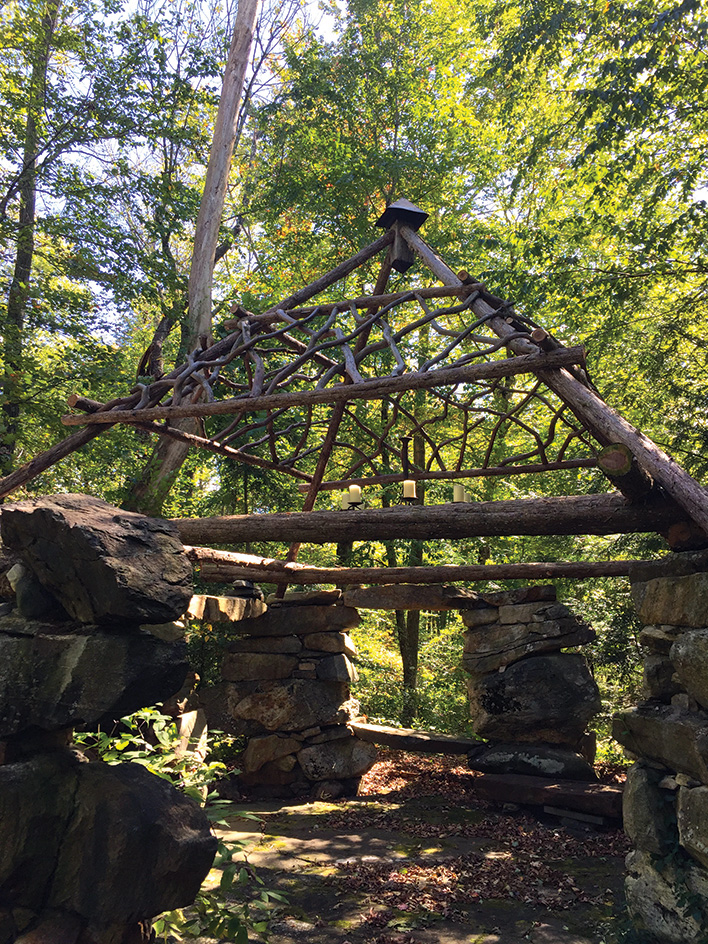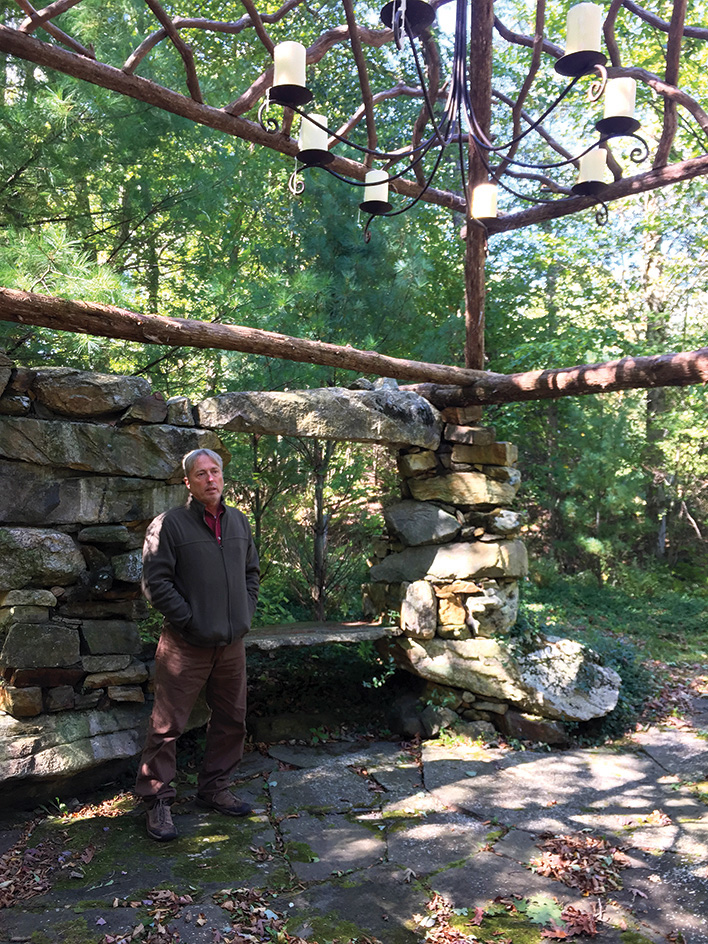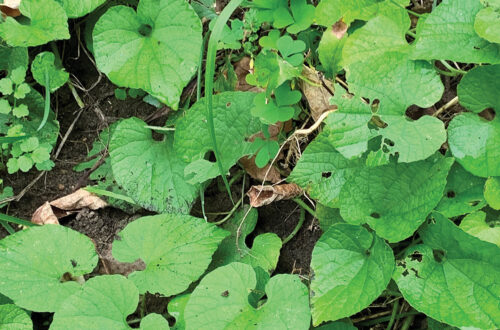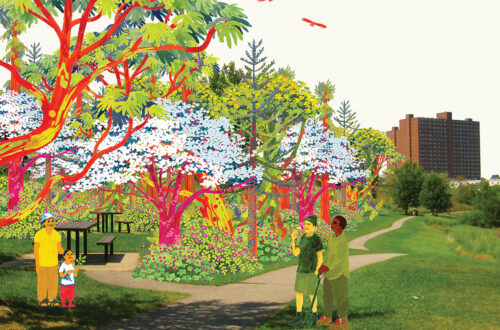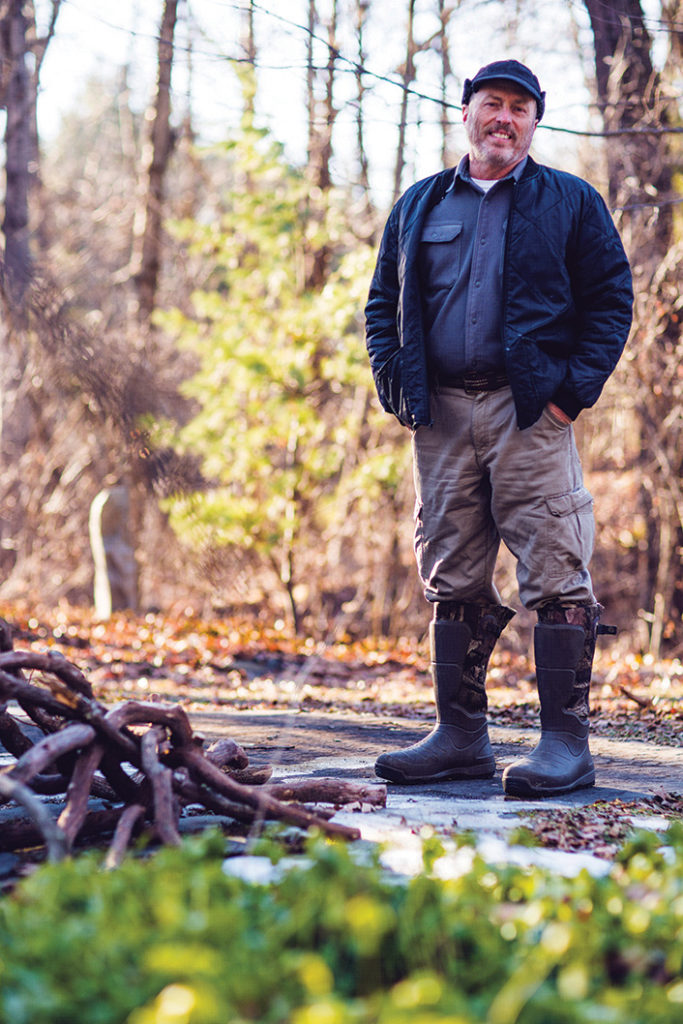
By Anne Rowlands
MARCH-APRIL 2018 – Meet Christopher Hawver who – in the late ’90s after 18 years as a celebrated chef – chose to make a career change and pursue life as a rustic furniture maker.
Why the switch? Like so many of us who find inspiration and comfort in a natural setting, Hawver was looking for a way into the woods.
In his youth, he wondered how to make it possible. Could he be a forest ranger? A fishing or hunting guide? At age 15, however, the door to the woods swung shut when he began a culinary journey that lasted many years until – after taking up deer hunting – the long-dormant call of the forest returned.
After an intensive self-development program, and a lot of soul searching, Hawver made a major life change from cooking to creating rustic furniture.
In the early years of his new career, at a workshop near his Coventry, R.I. home, he happily created and assembled a wide variety of furnishings, both decorative and functional, with “more enthusiasm than technique.”
Fast forwarding to 2018, we find him living in Torrington, with a workshop in Bantam, where he specializes in garden furniture and landscape structures. The business is aptly named The Branch Manager.
Making a Living
Genuinely humbled by his rekindled relationship with the land and grateful for what it can provide, Hawver is able to make a living by creatin furnishings and structures using materials he harvests himself.
He has a growing number of reliable sources for his wood, and actively seeks out landowners who want their fields, meadows or woods thinned of the species he uses (particularly Eastern red cedar, which grows abundantly throughout the region). He also reuses wood from old structures, sawmill rejects, etc.
Hawver’s culinary skills and sensibilities have never left and, as he gains appreciation and recognition of the delicacies to be had from Connecticut’s woodlands, his keen eye and patience brings delicious rewards.
With characteristic humility, he doesn’t think what he makes is beautiful or appealing just because he made it, but rather because of his chosen materials.
Known to friends who have driven with him as “Swivelhead,” Hawver drives slowly and constantly scans the landscape. His foraging harvests include giant puffballs, chicken of the woods and reishi mushrooms, chaga fungus (Inonotus obliquus – a charcoal-like mass found on birch trees), ramps and morels. Rest assured all are sustainably, legally, and respectfully gathered.
Rustic Furniture & Materials
Rustic garden furniture has a broad appeal and gardeners are pretty reliable fans. Hawver is a practitioner of twig work, using sticks that are forked, curved, or straight, and his hand-made constructions are completely unique and built to last.
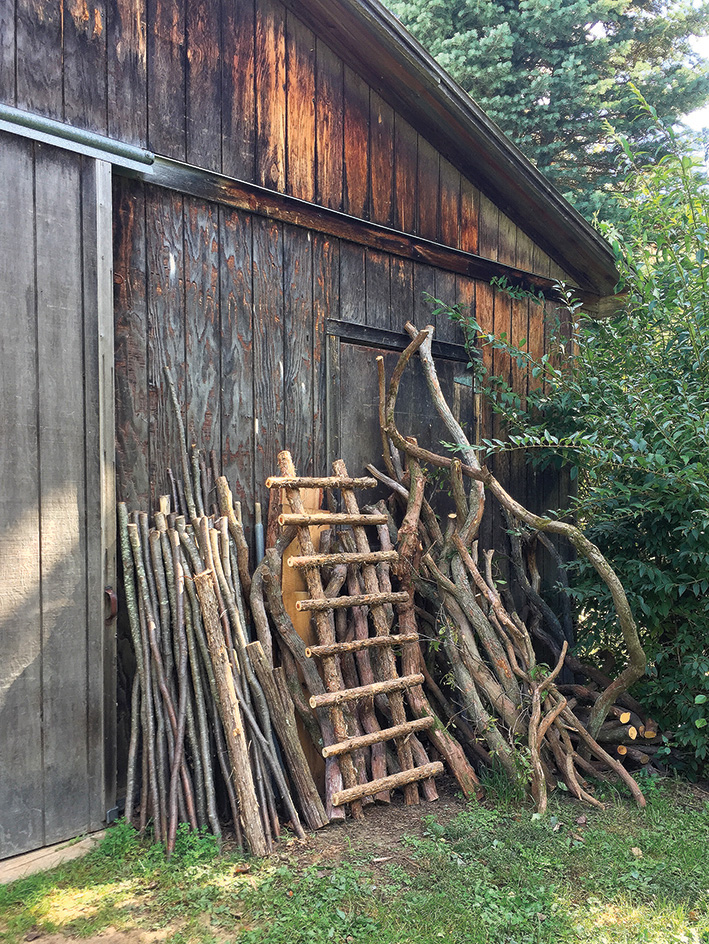
He likes his work to be creative and artistic, but also functional. Some rustic furniture makers seek perfection, wanting everything straight and even. Hawver claims to be tortured by convention (a common trait of talented chefs?) and prefers to work with uneven materials, subscribing to a more unkempt, organic and wild look.
As a chef, he let the ingredients be the stars. Now, he lets the wood do the work. Hawver’s structures and furnishings are made from several different woods: Eastern red cedar poles (Juniperus virginiana) provide straight, fine-grained, aromatic and rot-resistant wood; mountain laurel (Kalmia latifolia) has a strong, dense, close-grained wood; and slabs of cherry (Prunus), oak (Quercus) and sassafras are used for seats.
Though mountain laurel is the state flower, it’s not illegal to use the wood. Dr. Jeffrey Ward, chief scientist and head of the Forestry & Horticulture Department at the Connecticut Agricultural Experiment Station (CAES), says it’s a beneficial to cut back old shrubs. The plants get very leggy over time because they get shaded out when nearby plants and trees grow taller. Harvesting rejuvenates the plants. Gardeners with leggy Kalmia take note!
His oldest and most popular design is a simple garden bench made of hardwood slabs and other natural materials. They’re suitable for indoor or outdoor use. The seats are made of cherry, oak or sassafras and the legs are cedar and mountain laurel.
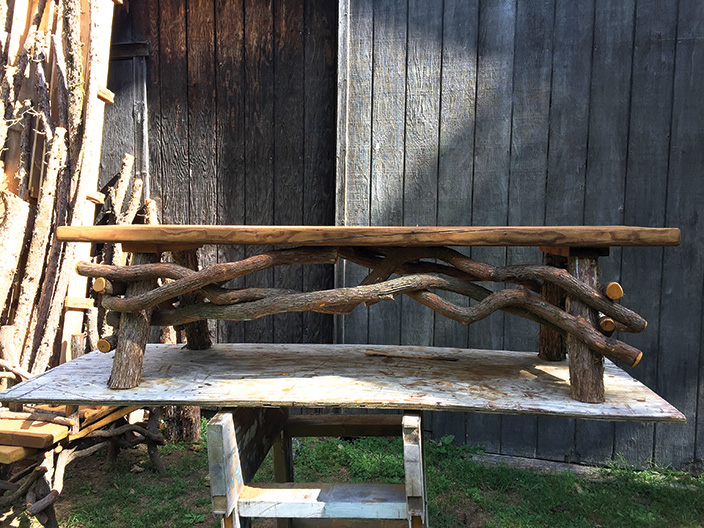
The Branch Manager Repertoire
Hawver focuses primarily on garden structures and furniture: fences, arbors, gates, and custom work (gazebos, railings, bridges and more). Some are pictured here. The Branch Manager website at tbmrustic.com shows a variety of examples.
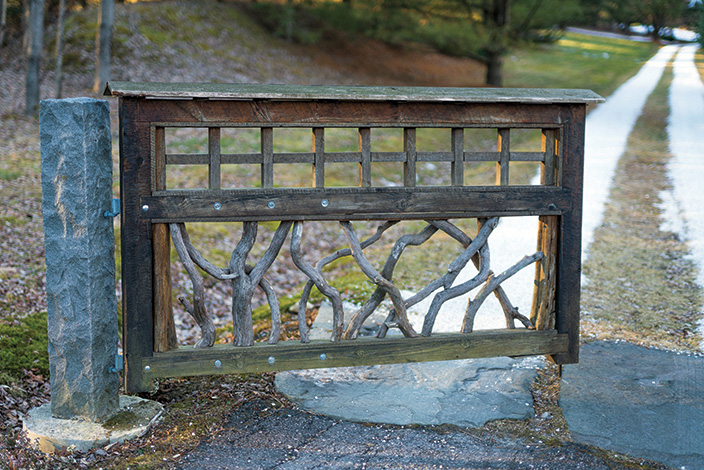
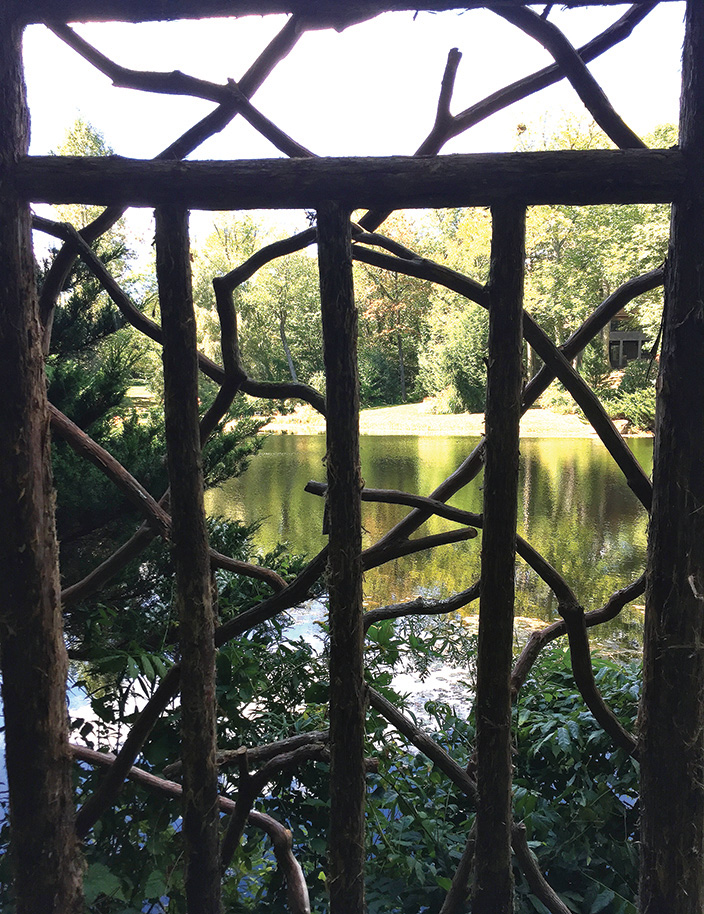
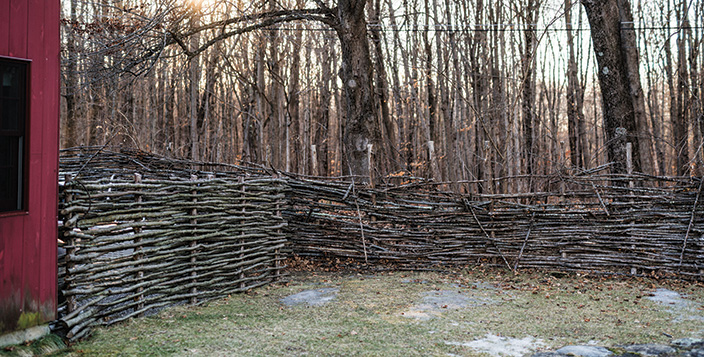
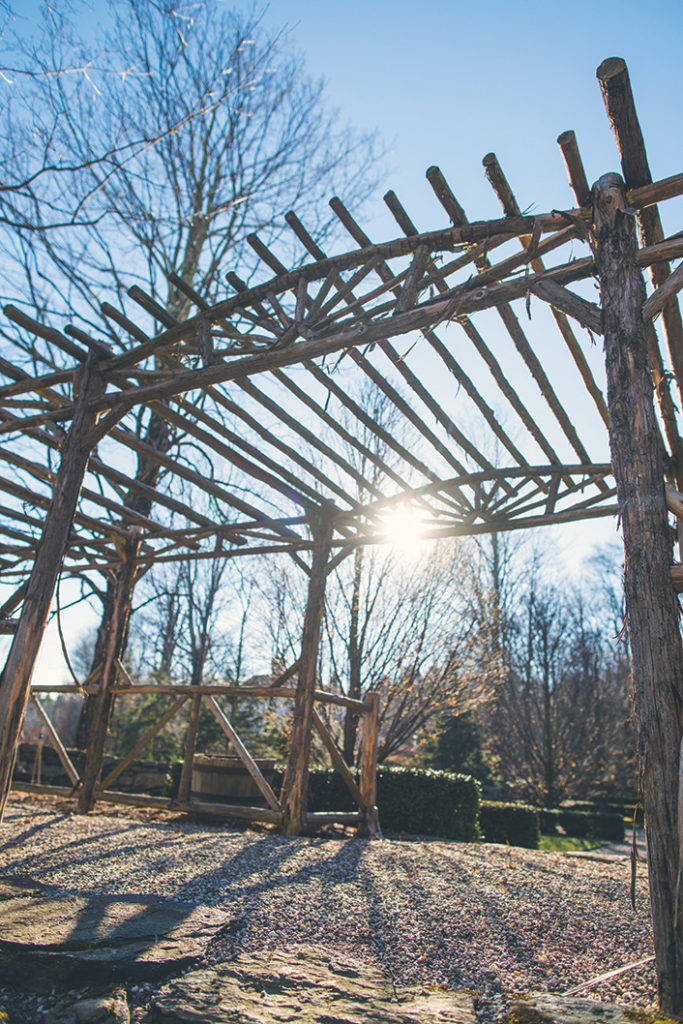
If you have a project in mind, you can contact Christopher at (401) 316-9147 or tbmrustic@gmail.com or visit his website at tbmrustic.com
